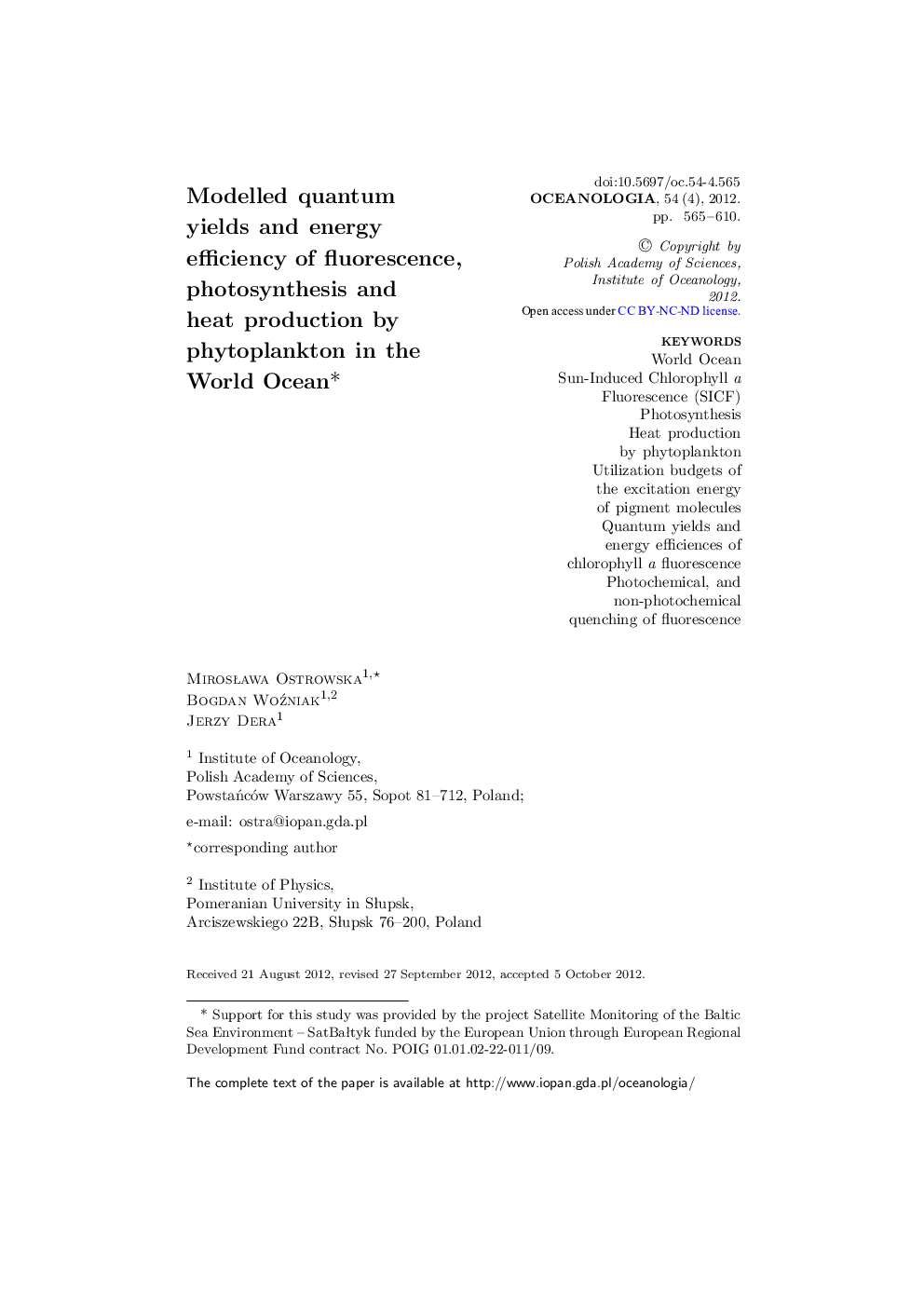| Article ID | Journal | Published Year | Pages | File Type |
|---|---|---|---|---|
| 2069732 | Oceanologia | 2012 | 46 Pages |
The paper discusses the utilization budgets of the excitation energy of phytoplankton pigment molecules activated on absorbing solar radiation under various typical conditions obtaining in the World Ocean. The deactivation of these molecules following the conversion of the excitation energy to the fluorescence of chlorophyll a, the photosynthesis of organic matter and heat is taken into account. To this end, a great many model computations were performed; these made use of the authors’ earlier models of the dependence of the quantum yields and energy efficiencies of the above processes on the three principal environmental factors governing the functioning of marine plant communities: the chlorophyll a concentration in the surface water layer (the trophic index of waters), temperature and the underwater irradiance at different depths in the sea. These model relationships were used to determine vertical profiles of the quantum yields and energy efficiencies of the chlorophyll a fluorescence, photosynthesis and heat production by phytoplankton in different trophic types of sea in three different climatic zones (tropical, temperate and polar), in two seasons of the year – June (summer in the northern hemisphere) and January (winter in the northern hemisphere). The results of the calculations are given for areas of oceanic Case 1 waters, which cover more than 90% of the volume of all basins in the World Ocean (according to the optical classification by Morel & Prieur 1977). The results of these calculations, though preliminary, provide a comprehensive description of the range of variability of the yields/efficiencies of the three deactivation processes. The results have made it possible to summarize, within the context of the euphotic zone, of the budgets of phytoplankton pigment molecule excitation energy expended on three complementary processes, namely, the fluorescence of chlorophyll a, the photochemical assimilation of inorganic carbon and the photosynthesis of organic matter, and the radiationless, nonphotochemical conversion of the pigment molecules’ activation energy to heat.
